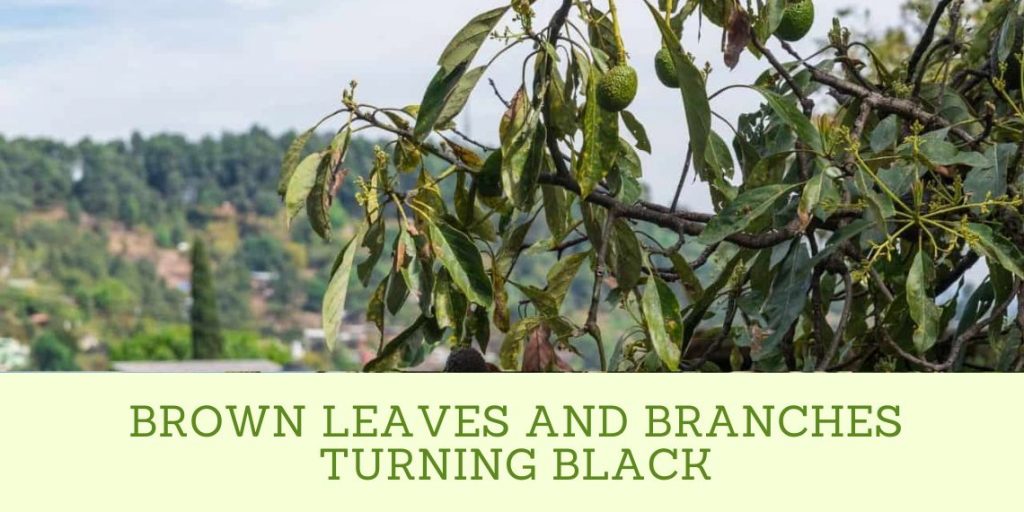Though you may love its thick foliage and delicious fruit, avocado trees aren’t always the pride of your yard. Avocado trees often fall ill because they are picky about minerals, salinity, and fertilizer. Most varieties are also susceptible to three types of root rot, one of which is quickly fatal. If you have noticed that your avocado tree has an infection or other problem, you have to act promptly to save it. Here’s what you should do, based on your tree’s symptoms.
Drooping Leaves and Losing Leaves
Any plant with drooping leaves usually needs more water. Avocado trees are no exception. You shouldn’t water on a schedule. Instead, water when the soil is completely dry unless it is going to rain.
If you are watering when the soil is dry, and the avocado tree is drooping, root damage may be the cause. When the tree’s roots are damaged it can’t take water from the soil no matter how much is there.
How to Fertilize an Avocado Tree
To avoid damaging the roots do not water with salt or hard water, both of which will burn the roots. You should also avoid fertilizing an avocado tree if it has been recently transplanted, as the feeder roots will be extra sensitive to chemicals at this time. Once the tree is established and healthy, you can use a fertilizer that has extra nitrogen and zinc, such as a 16-4-8.
Brown Leaves and Branches Turning Black
The likely culprit behind these scary symptoms is root rot. There are three different kinds of root rot, and you’ll want to determine which has afflicted your tree because one is always fatal.
- Rosellina root rot: A tree with this rot will have white patches on the trunk or limbs and purple growths near the soil.
- Oak root rot: This looks like large collections of smaller yellow or brown mushrooms near the soil line. It is also known as Amarillo root rot.
- Common avocado root rot: A tree with this root rot will have brown tips on leaves, black/rotting feeder roots, and potentially dead branches on the top of the tree.
Rosellina root rot is considered fatal. It is best to give up on this tree, destroy it, remove all of the soil (which is infected), and plant a new avocado tree in its place. If you don’t, you will spread this root rot to uninfected trees nearby.

You can treat the other two avocado root rots. Apply the fungicide Agri-fos right away to treat the rot, and then twice a year to prevent it, in late spring and late summer. You should also work gypsum into the first six inches of soil, which will prevent the root rot from spreading.
For severe infections, you can dry out the avocado tree’s roots. To do this you gently pull out the dirt from the top six inches of soil, being careful not to damage the roots. Cover them with a cloth, so they don’t burn in the sun, and leave them to dry.
Once dry, replace the soil with new, uninfected, sandy soil. You can even place a few PVC pipes near the roots so they will dry out faster in the future, preventing another root rot infection.
Revive a dying avocado tree
To revive a dying avocado tree, you can follow these steps:
- Prune damaged branches: Remove any damaged or dead branches to improve the overall health of the tree and promote new growth.
- Identify the cause of the problem: possibly change the soils, provide proper drainage, do not overwater, test for fungal diseases like root rot, and treat it with fungicide and gypsum.
- Do not overwater as there are no leaves to transpire. Let the top half inch of soil dry out before watering.
It is important to note that prevention is key to keeping your avocado tree healthy. Proper care and maintenance, such as providing full sunlight, well-draining soil, and avoiding overwatering, can help prevent the tree from dying in the first place.
Sunburn
If your avocado tree is losing leaves or if its branches are turning black from root rot, its bark may be exposed to direct sunlight, which may cause sunburns. To protect the sensitive bark, paint the trunk and larger limbs white. First, dilute a white latex paint with equal parts water, and then generously paint it on. According to the California Avocado Commission, you could use the fungicide Fosetyl-Al (Aliette®) as trunk paint instead.
After any of these treatments, you should keep a close eye on your avocado tree. Soon, it should be standing up straight with healthy new growth.

